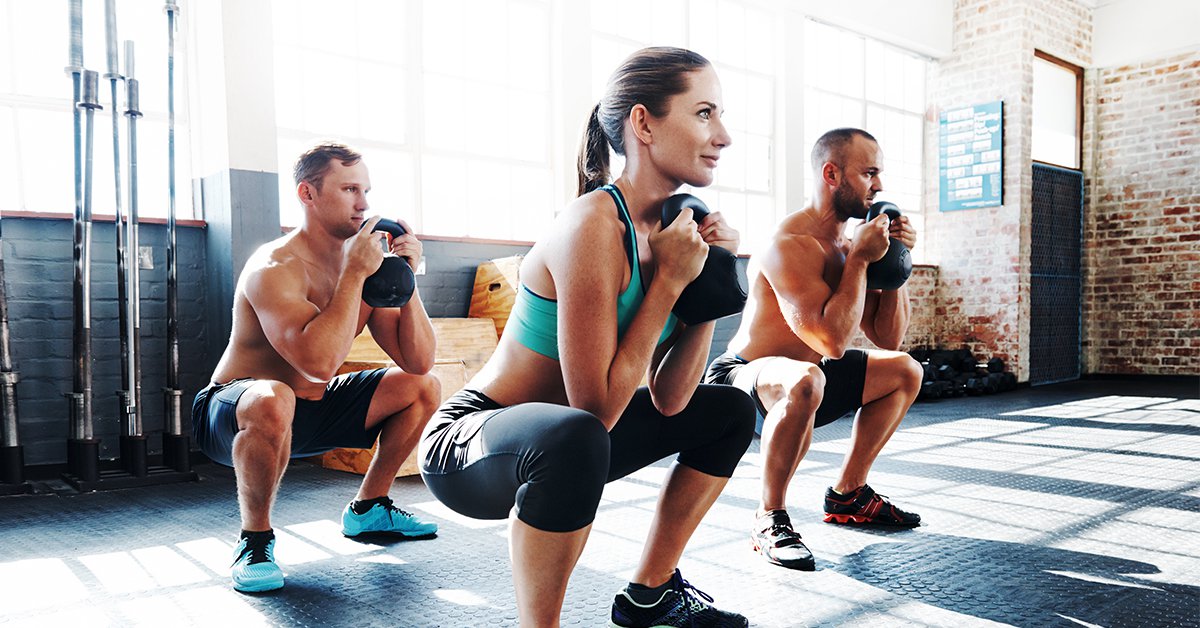The kettlebell squat is a powerful, versatile exercise that enhances strength, endurance, and mobility. Squats are already well-regarded as one of the best compound movements, engaging multiple muscle groups simultaneously, including the glutes, quads, hamstrings, core, and lower back. When performed with a kettlebell, the squat becomes even more dynamic, adding resistance and helping to build balance, coordination, and functional strength.
Benefits of the Kettlebell Squat
- Enhanced Muscle Activation: Holding a kettlebell in front of your chest (goblet position) shifts the load to the front of your body, engaging your core and quads more intensely than a traditional bodyweight squat.
- Improved Core Stability: The added weight of the kettlebell requires extra core engagement to maintain stability, helping to strengthen the abdominal muscles and obliques. This improved core stability translates to better posture, increased spinal support, and injury prevention.
- Functional Strength Building: Kettlebell squats mimic many of the movements we use in daily life, such as lifting heavy objects from the ground or carrying groceries. By training with kettlebells, you develop functional strength that supports everyday activities and enhances athletic performance.
- Joint Mobility and Flexibility: Kettlebell squats encourage a full range of motion in the hips, knees, and ankles. This can improve joint mobility over time, helping to increase flexibility and reduce stiffness.
Types of Kettlebell Squats
There are several variations of the kettlebell squat, each with unique benefits and challenges. Here are some popular options:
- Goblet Squat: The goblet squat is the most common form of kettlebell squat, where you hold a kettlebell at chest height with both hands. This position helps beginners achieve proper squat form while keeping the core engaged. Goblet squats are ideal for building leg and core strength.
- Kettlebell Front Squat: In this variation, you hold a kettlebell in each hand, resting them on your shoulders with elbows forward. This increases the load and demands more from your core, making it an excellent choice for intermediate to advanced exercisers.
- Suitcase Squat: With the suitcase squat, you hold a kettlebell in one hand at your side while squatting. This unilateral load requires additional stability from your core and helps improve balance. Alternating sides can help correct muscular imbalances.
- Single-Leg Kettlebell Squat: For advanced exercisers, the single-leg kettlebell squat offers a challenging way to improve balance, coordination, and leg strength. Holding the kettlebell in one hand, squat on one leg while keeping your torso upright.
How to Perform the Goblet Kettlebell Squat
- Start Position: Stand with feet shoulder-width apart, toes slightly pointed outward. Hold the kettlebell at chest height, gripping the handle with both hands.
- Initiate the Squat: Keeping your chest lifted and back straight, push your hips back as you bend your knees to lower your body. Aim to go as low as possible, ideally until your thighs are parallel to the floor or slightly below.
- Engage Your Core: Keep your abs tight throughout the movement to maintain stability and prevent leaning forward. Avoid rounding your back or allowing your knees to cave inward.
- Drive Back Up: Press through your heels and squeeze your glutes to return to the standing position. Focus on maintaining control throughout the movement.
Common Mistakes to Avoid
- Rounding the Back: This is a common mistake that can lead to lower back strain. Focus on keeping your chest lifted and spine neutral throughout the movement.
- Knees Caving Inward: As you squat, be mindful to keep your knees aligned with your toes. If your knees tend to collapse inward, work on strengthening your glutes and outer thigh muscles.
- Holding the Breath: It’s important to breathe through the movement. Inhale as you lower yourself and exhale as you return to standing.
Conclusion
The kettlebell squat is an exceptional exercise for building total-body strength, enhancing core stability, and improving functional fitness. Whether you’re a beginner or an advanced athlete, incorporating kettlebell squats into your routine can help you develop a balanced and strong body.




